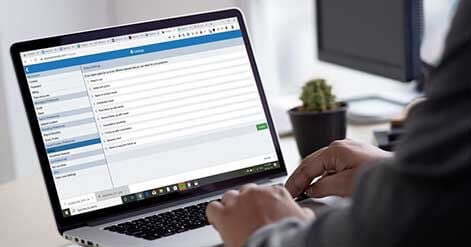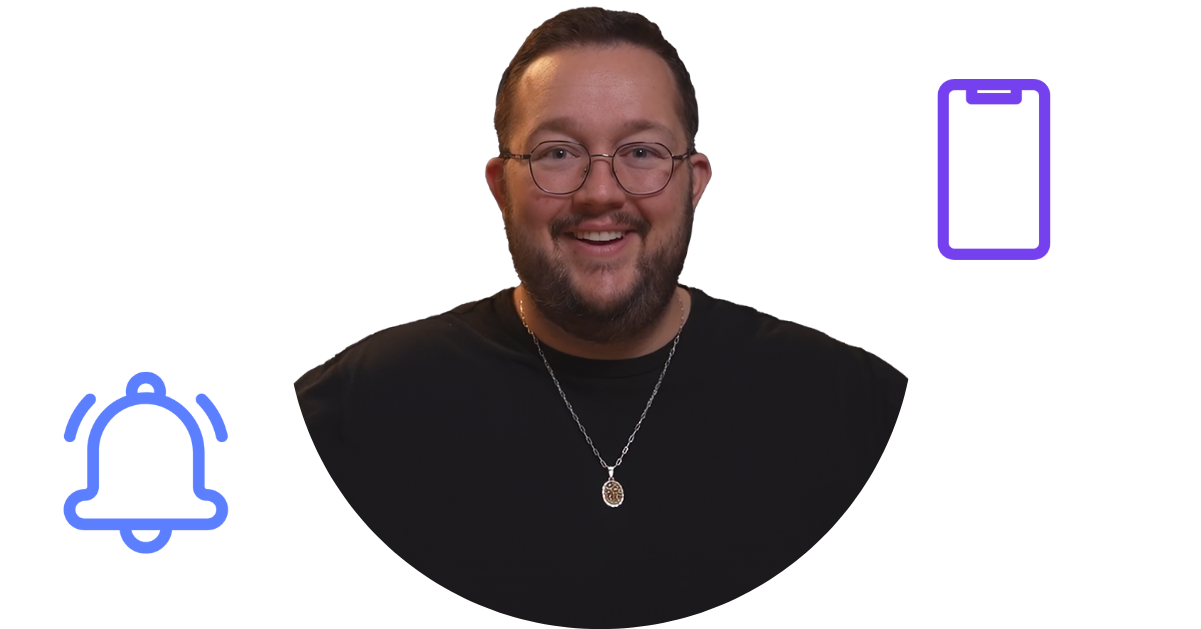Cold Calling Tips and Scripts That Convert in Real Estate

10 cold calling tips to turn phone calls into new business
Cold calling doesn’t have to be hard or as cold as it sounds. With the right information and data, you can quickly turn any cold call into a warm conversation that leads to the one place you want it to go - a closed deal.
With that, here are 10 simple tips to warm up the typical cold call and turn warm leads into hot deals.
1) Know the cold calling laws.
First and foremost, there are cold calling laws and regulations governing telemarketing. As with most consumer protections, they exist because of previous businesses behaving badly. Make certain you are familiar with the Federal Do Not Call provisions and be aware of how failing to comply could result in penalties.
Just as everyone loathes email spam, the disdain for telemarketing arises from businesses failing to do a good job of targeting and lacking a legitimate offer.
Simply put, it’s not spam if it’s of interest to the person you are cold calling.
Here is additional FTC background to absorb:
Tips for advertisers and marketers
2) Create hyperlocal lists
Cold calling a long, unfocused list will keep you busy but won’t necessarily help grow your business. The most successful calls are relevant to the person you are cold calling.
For example, a business that provides a service to owners of rental properties can easily target owners of rental properties. It’s a waste of time to have to qualify if the person you are contacting is an owner of a rental property.
Example Call:
- Bad: “Hi John, I’m calling to see if you own any rental properties?”
- Good: “Hi John, I’m calling about 1234 Briarwood, which I understand is a rental property you’ve owned since 2009.”
Focus on specific owner and property hyperlocal information criteria as well as the owner demographics to help ensure that your offer will resonate with them. Narrow down your lists to fit a specific script with an offer that is relevant to the person you are calling.
3) Know who is on your cold calling lists
Researching property data and owner information with PropertyRadar provides key insights like age, interests, gender, income and net income, which is vital to understanding how to approach your prospects to make a positive impact.
You’re that much more in-tune with their situation and their potential wants and needs to see how your business can benefit them. If social profiles are available (they often accompany the PropertyRadar individual profiles), take a moment to visit their LinkedIn, Facebook or other social profiles to gain additional insight into who they are.
Perhaps things you have in common with that prospect will make it easier to have a conversation and will make your message resonate more. You can discover things like whether you have a mutual connection or if your contact is on vacation and today is not the best day to call.
PropertyRadar makes it easy to hone your best fit prospects into mailing lists that are highly detailed and aligned with your hyperlocal marketing efforts. Research the prospects on your list to validate that they match the offer or opportunity you intend to communicate. The more you understand about the hyperlocal prospects you are marketing to, the better your cold calling scripts will be and the more welcoming they will feel toward your call and offer.
Be sensitive to the information you have, although more information helps you better connect with prospects, there are things people may not want you to know and as it is with public records, there is always a possibility that the information is incorrect. Respect the privacy of your potential business prospects. Be careful not to talk to them about who they are, but about something that you have to offer that you think they will want based on your understanding of who they are.
4) Know how your offer benefits the person you are calling
You want your offer to have value and be of interest to the people you are calling to be successful and safeguard your brand from coming across as indifferent to the etiquette of good business intent.
The more specific your offer is to the person you are contacting and the more you can convey a legitimate opportunity to them, the more receptive they will be.
But what if you do not have an offer until you qualify certain information regarding the prospects?
That’s a common situation. Just know your specific objective for calling and have your questions ready to go. Sometimes the objective may be as simple as letting them know why you are calling. For people uninterested in phone correspondence, apologize for your call interruption and ask for their email address, so you don’t have to bother them with future phone calls.
5) Write cold calling scripts and practice, practice, practice
Your prospect only has a limited amount of time to talk to you on the phone. Grab their attention immediately by knowing what you’re going to say ahead of time.
Don’t call to make a sale. Call to engage a hyperlocal business prospect in a conversation about their needs and how your offer can help. Avoid starting with polarizing questions that get a ‘yes’ or ‘no’ answer. Keep questions light to make the person you are cold calling feel comfortable. Prepare follow-up questions to ensure you can keep the conversation flowing.
Practice scripts until you can easily recite them from memory. Record yourself and listen to the recordings to gain insight to your own technique – would you want to talk to you?
Finally, it never hurts to practice on friends and associates to get their feedback. Many cold calling pros will tell you that practicing on a friend can be more challenging than the real calls and is the best way to hone your skills without fear of making a mistake when it counts.
6) Master the art of voicemail
Most folks won’t answer a caller whose ID they don’t recognize. That’s OK! Especially if you’re prepared with a voicemail message that will get them to return your call, send you an email or text you to reply.
Your objective of the voicemail is not to sell the offer or opportunity right off the bat; it’s to build a bridge. As tempting as it may be to try and blurt everything out, just focus on getting the callback or establishing contact with the potential customer.
Voicemail can be just as effective as email and sometimes even more so. Think about how many emails you receive a week versus the number of voicemails.
Leave a cheerful voicemail introducing yourself, include a number where you can be reached and give them your email address in case they don’t want to talk on the phone. You can also suggest they text you to get in touch if you’re reaching out from your mobile.
Let them know you’ll be calling back and if that is not of interest to them, to please let you know. Your time is valuable so you’re happy to not bother them again if they let you know.
7) Get in the zone and get cold calling
Create a comfortable space for yourself. Use photos, inspirational quotes, whatever makes you feel positive and enthusiastic. Find a quiet spot where you can focus before you start your cold calling.
People can hear your body language, which is why it’s important that you smile and use hand gestures to help your personality come through the phone. Standing up while talking is one technique many beginners start with. If you aim to make many calls, use a headset that frees your hands to take notes on the call and to use your natural body language to help articulate your personality.
Once you’re in the cold calling zone, stay in the zone. Turn your notifications off, smile and dial.
8) Follow-up
On the first cold call, often it’s a success just to connect and get an email address for future follow-up. You don’t need to close the deal on the first call. To effectively follow-up, get a commitment to reconnect.
Establish a follow-up call appointment and email a reminder and an agenda with something valuable to that prospect so they have everything of interest to them ahead of the appointment. Be sure to always communicate that if there’s no interest or if the offer isn’t right, to please let you know.
You don’t want to waste your time trying to reach someone who is ignoring you. If they feel comfortable that you will stop calling and emailing if they ask you to, they will be far more receptive to the message you’re trying to convey. At the end of the day, time is your scarcest resource; if they don’t bite, move on.
9) Create a workflow
To effectively move through each cold calling prospect, make clear notes in your outreach lists. Understand who to call and when, note whom you left a voicemail for and when to follow-up with each contact after a few business days from your initial outreach. If you don’t establish contact with a prospect, mark the lead as one to “Nurture” and move on.
PropertyRadar has a Status field feature on each property listing. You can customize these status labels to your own workflow. Marking contacts appropriately within specific workflows gives you the visibility you need to accurately assess how you are doing with your calls.
10) Keep track of your cold calls and set goals
Some cold calling experts advocate for volume. That works if you’re a penny stock financial trader; but for small businesses like real estate investors or architects, classic volume goals like “50 calls in 150 minutes” is probably not right. Think quality, not quantity. Better hyperlocal marketing tactics and more research will likely result in more deals.
Keeping track of every call you make is an analytical approach that will help you make predictions about the future. You may come to find that for every 100 calls you make you qualify 20 leads. Of those 20 leads, two to three eventually turn into business. Poorly targeted lists with little research make more work for you, having to make thousands of calls instead of only 100 to the best-fit potential clients. You’re better off spending time researching and implementing smart hyperlocal marketing techniques than haphazardly calling people off-target. It’s a waste of your time and theirs.
Like any skill, your cold calling abilities will develop over time and with practice. Beginners shouldn’t start cold calling down their hottest prospects first. Give yourself time to gain a little experience. Learn to navigate the myriad mini-challenges people can throw at you on a call. Again, they are skills developed over time.
But as every veteran cold calling pro will tell you, use these 10 cold calling tips and you'll be a pro after your first 100 calls to.
Want the deep insights into your prospective customers you need to turn cold calls into hot leads? Start your free trial of PropertyRadar today.


